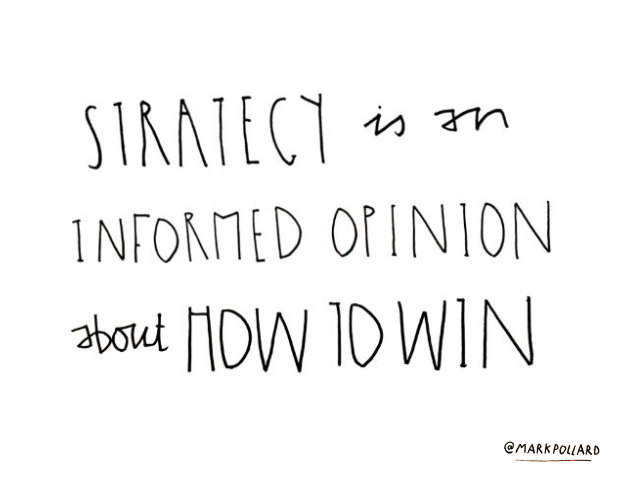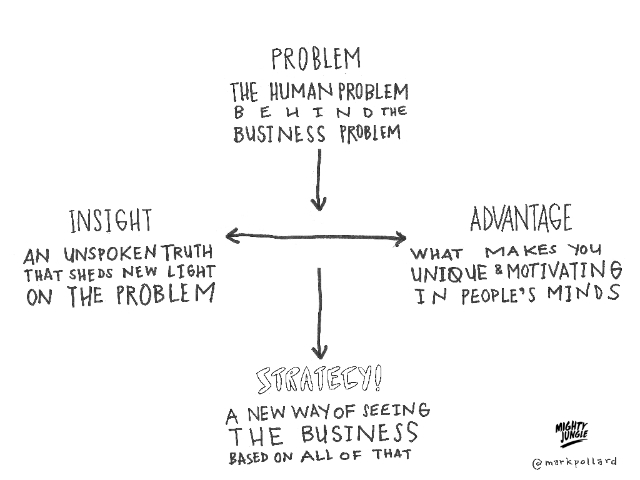Strategy portfolios aren’t difficult. The Terrible Twos are difficult. The Terrible Twos are the third year of our lives, a year in which we become hooligans in the home. This is a state to which we all return decades later. No, strategy portfolios aren’t like this - strategy portfolios are dainty.
Flower arrangements are dainty. You diagnose your mood and creative appetite, you peruse your flower shop, then you select, cut, and arrange, and make someone happy or less sad. This is also what a strategy portfolio must do - make someone happy or less sad.

Like account planning, you can’t really get a strategy portfolio wrong but you can get it dull. A dull portfolio contains boring work, long words, and it looks like it was made simply because that’s the thing one does nowadays, isn’t it?
For a second, let’s try empathy. Assuming you make your way through the young recruiters who may or may not know much about what you do or want to do but they know they have a seat to fill, the person reviewing your portfolio online or in person has probably contemplated and contributed to hundreds of projects. Your strategy portfolio needs to smell like one of these.
Also, strategy is an informed opinion about how to win. So have an opinion. Otherwise, try a different career.

If you’re new to the industry and you’re applying to a place that is good at account planning (and there are many places with account planners that don’t do much account planning), you have this riddle to solve:
-
You need to look legit. You need to look like you have a sense of the history of your industry, the basic language and concepts, a way with research, and a way with words.
-
You need to look like you have a brain and your brain needs to look like it has an edge. It needs to look like there is something sexy and unpredictable going on in there.
-
You need to look bigger than your CV. Everyone has a CV. Most people have a portfolio. How can you look bigger? How can you weave in other things in which you’re an original gangster? The rest of you.
The lazy way to do a strategy portfolio is to treat it like a high school assignment, where you get a bunch of your work, and write about it without giving a shit about the person reading it. Blah blah blah. When you take someone who knows what they’re doing through this kind of portfolio you’ll hear “Uh-huh Uh-huh Uh-huh” but the person is saying “Next, next, next. Hurry up and get to a point, any point.”
A lazy case study does this:
-
It features a boring, shallow definition of the business or brand problem.
-
It takes the original problem at face value.
-
It talks about awareness or relevance issues as the things to solve - yawn.
-
It lumbers from one long word to another with generic statistics thrown in.
-
It shows boring work.
-
It lacks a point of view.
A solid case study will cover these things:
-
The brief as you received it
-
The research you did
-
How you re-framed the brief
-
A sharpened or different audience definition
-
The problem you identified and proof it was the problem
-
An insight that sheds new light on the problem
-
A new way of thinking about the competition or culture
-
A new way of thinking about the product or brand
-
The work the brief inspired
-
Whether the work worked
Imagine this diagram is a dart board and try to hit at least two of these things. These are ideas (and here’s what ideas are: How to explain an idea). If you hit two ideas per case study, you’ll have a good conversation. A good conversation is what a good interview is. If an interviewer talks at you the whole time, they are either nervous or a narcissist or struggling to hire people. You can diagnose this after you start the job.

Read How to do account planning - a simple approach for details about this diagram.
Yes, there’s room for a lot of other information but you want to be able to get the guts of the story across in a minute or less (or 200 words or less).
Yes, you need to consider what to do if your strategy work was good but it didn’t lead to good creative output, if the work is confidential, or if what you did was a standalone strategy deliverable and it didn’t lead to any creative output.
And you need to present your thinking without backing out of it when someone asks, “Why did you do that?” or “How did you find that out?” Keep the talk in the project and in your thinking about the project. Don’t go into excuses about your colleagues or peers at college or portfolio school. You’ll waste time and energy and distract yourself from your goal: to land at least one unexpected and defensible idea per case study. That’s it. Simple, right?
And don’t forget the second part of the challenge: to get and keep the attention and memory of the people reading your portfolio when you’re not with your portfolio.
If you need to present a longer piece of thinking, borrow some of the techniques here: How to make a presentation make a point.
Like flower arrangements, your job is to make this person happy or less sad, or maybe even jealous.
You’re trying to poke the person in the brains and make them think, “Whoa, I didn’t see that coming.” You want to give the person a sense of intellectual danger, to want you, to want to go into battle next to you.
It’s primal.
And if you share your strategy portfolio with an account planner who doesn’t want this and they hire you anyway, good luck doing good planning with them. Your presentations will be tidy and full of bullet points and highly agreeable unlike you when you were in your Terrible Twos.
Now
-
Please share this article with at least one person
-
Take this sick brand strategy Skillshare class
-
Join my email newsletter
-
Join thousands of strategists in Sweathead on Facebook


